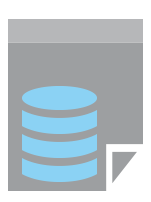
AIR's CEDE Database Schema Is Now Publicly Available
The starting point for effective catastrophe risk management is the collection and transfer of high quality, detailed global exposure data. While the insurance industry has made great progress on this front over the past decade, cat modeling professionals acknowledge there is more to be done. In an effort to promote the collection of detailed data, to facilitate accurate and transparent data exchange throughout the insurance value chain, and to encourage more analytics, AIR is making CEDE™public.
AIR has long been a proponent of open standards. We developed UNICEDE-an open data format-in 1993, and we made it available to the industry via a public website, unicede.com. AIR was also the first catastrophe modeling firm to support ACORD's exposure data standards and our software platforms were the first to be certified by ACORD for the implementation of those standards. Now AIR is continuing our commitment to openness by publishing our CEDE database schema.
CEDE, which stands for Catastrophe Exposure Data Exchange, is the exposure database format used by Touchstone®, AIR's comprehensive risk management platform that was first released in early 2013. Because adoption of Touchstone across the insurance value chain continues to gain momentum, CEDE format exposure data is in increasing demand. Over 100 primary insurers, brokers, reinsurers, and hedge funds are already using Touchstone. As the industry continues to shift in this direction, data formatting should not be an obstacle.
Open data standards remove unnecessary barriers and facilitate both the understanding of catastrophe risk and the robustness of model results. Making CEDE publicly available offers companies the opportunity to transfer risk more efficiently and to a wider audience. New entrants into the cat modeling space, including providers of third-party models with whom AIR is partnering on Touchstone, can adopt CEDE to increase usability and achieve faster go-to-market speeds. Across the industry, as less time is spent converting formats or ensuring consistency among data sets,companies will have more time to focus on what's important:improving the quality of their underlying data and making better risk management decisions that improve the bottom line.

